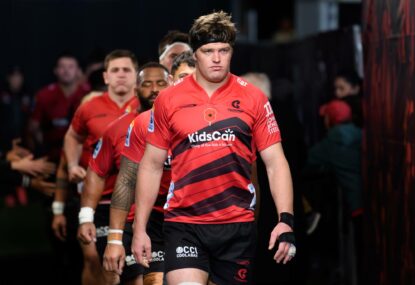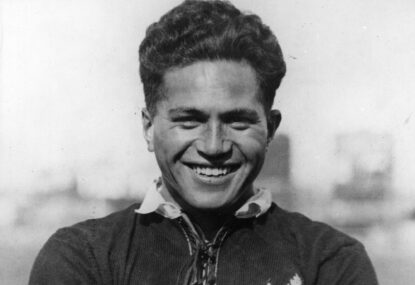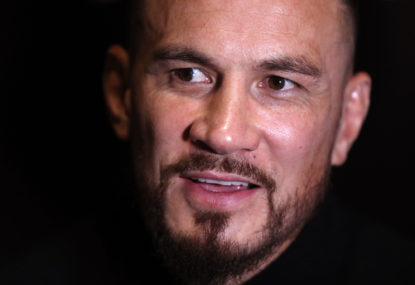Watching the Test match on a Saturday afternoon in 2008 between the All Blacks and South Africa, I was impressed with the non-stop tear-away speed of the game brought about by the inclusion of the ELVs.
But the highlight of the match, to my eyes, was the try scored by Ricky Januarie, the South African scrum half or half back.
The scrum half battle with All Black Andy Ellis to that point was a very even contest; both these halves were at the top of their game with very contrasting styles.
Ellis is the bigger man who has a great pass and acts as an extra forward at times and is able to kick with both feet. He is a beautifully balanced runner and relies, for most of the time, on serving his incredibly talented fly half (Daniel Carter) with consistently good clean ball; while Januarie is a much smaller man but equally as talented as Ellis.
Januarie is a bustling, nippy little terrier of a player, very creative around the rucks and serving good ball to his fly half. But, as was seen late in the Test match, he was at his brilliant best with chip and a chase and a darting run against tiring players to score the winning try.
Having been a keen observer of positional play within the game of rugby since the early 70s, I have always had an eye for the person that has the peripheral vision and skills to control a game of rugby.
I have come to the conclusion that while a great fly half is vital to your team’s performance, a great scrum half (half back) is also very necessary, and is maybe, a more important ingredient to facilitate a team’s performance.
Having coached seniors and juniors for over thirty years and sought advice from all I have met (players and coaches) in both ranks, I have noted that a large proportion of junior coaches don’t seem to rate the ability of the scrum half as a major contributor to the game.
In a lot of cases, it’s only when we get to the senior ranks that some coaches see the light and seriously consider the half back as one of the most important players on the pitch.
As Jonathan Davies (Welsh icon and fly half) once quoted: “the game can’t start without the scrum half delivering the ball and he alone dictates the direction of the attack”.
The fly half, when acquiring the ball from the scrum half, can then use his special skills to accentuate the attack to further enhance the ability of the team.
I have had the privilege of watching in the early 80s Peter Slattery and Brian Smith, who both played for Wests Rugby Club in Brisbane and then ultimately Australia: Peter as scrum half for Wests, Queensland and Australia, Brian as scrum half and fly half for Wests, Queensland, Australia and then Ireland.
He then went on to play for Eastern Suburbs at League and is now on the panel of coaches for England.
Both of these players complimented each other and made the other’s attributes stand out.
The same could be said for other combinations like, Nick Far Jones and Michael “Noddy” Lynah, George Greagan and Steven Larkham, Peter Stringer and Ronan O’Gara.
The list goes on.
However if the scrum half is not up to par, the whole fabric of the game starts to break down.
On the other hand if the scrum half is talented, he makes all the difference. I liken him to the conductor of a large orchestra.
The conductor waves his batten pointing in different directions to make sections of the orchestra play, creating a flowing cacophony of beautiful music.
And so it is for the gifted scrum half: he points, yells, cajoles, orders and in general orchestrates the team around the field
All too often, as I watch junior or teenage rugby, I see examples of very little concern for the position and skill of the scrum half. Often the kid that gets the nine position is the kid that can’t run that fast, has a fair pass and a bit of cheek.
“We’ll put him there to get him out of the way”, the fly half will clean up the mess and get it to the backs, if that doesn’t work we’ll run it in the forwards.
My philosophy is to try and pick a good half combination, with attention to my scrum half being very aware of what his job entails, and coupling that with an intelligent fly half.
Then build my team around this combination.
Nothing makes the heart beat faster and the adrenalin pump than seeing a flowing backline movement, the backs alight, and a try scored in the corner by a diving winger. But one has to realise that the whole operation can’t start without the scrum half delivering that first vital pass.
Or, as we have witnessed in 2008, South Africa Vs All Blacks, Ricky Januarie with a dart, a chip, chase, and regather, to score the winning try.


































































































